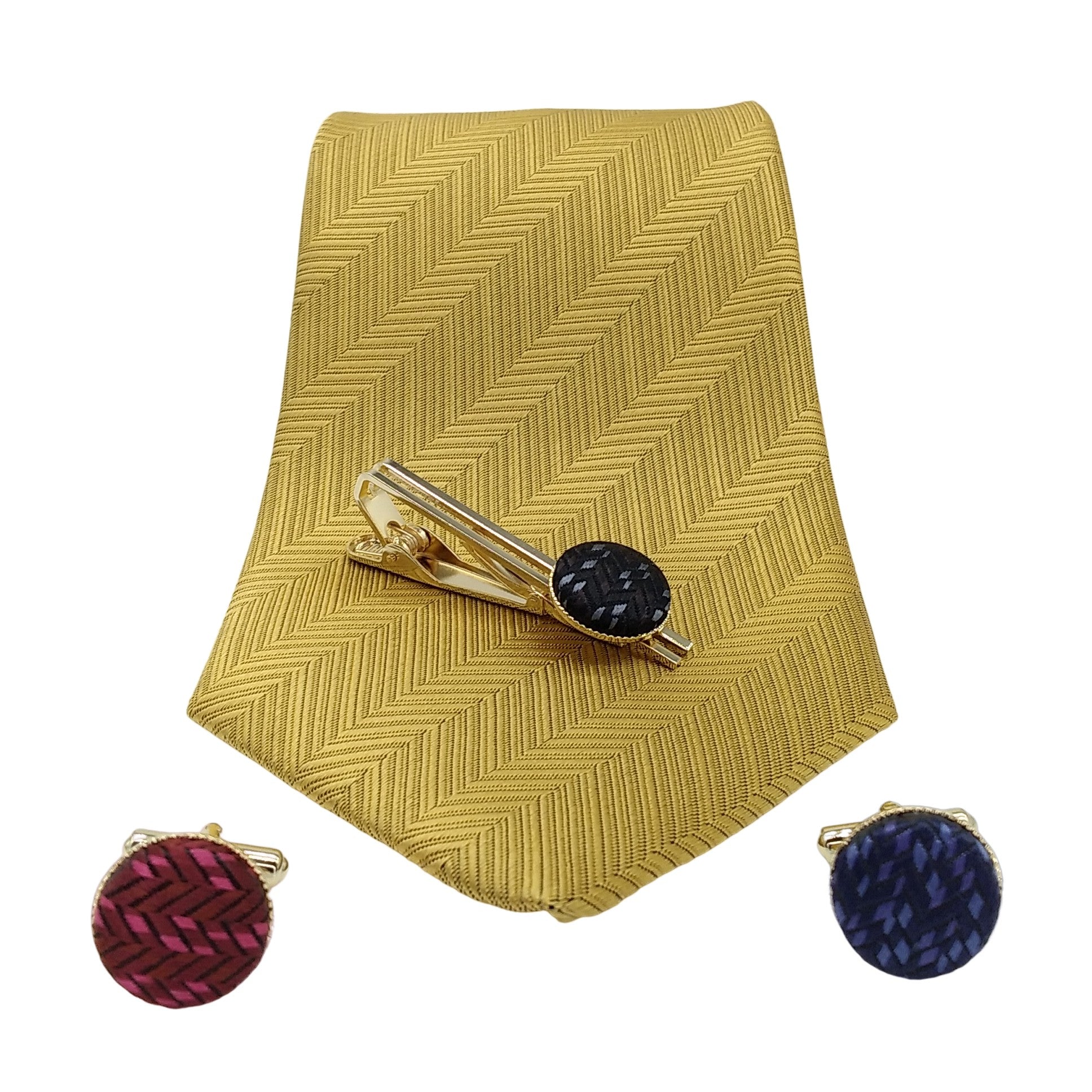
Men's "NISHIJIN"
The history of Nishijin-ori begins in the Kofun period.
The Hata clan, who immigrated to Kyoto from China, passed on techniques of sericulture and silk weaving.
Production of Nishijin textiles began during the Heian period.
After the 11-year succession dispute during the shogunate's politics, textile production resumed in the western camp, and it came to be called Nishijin-ori.
Nowadays, it is prized as one of Japan's leading high-class textiles.
It is characterized by high-mix, low-volume production, and was designated as a national traditional craft in 1976.
As an option, initials (up to 5 English letters including dots) can be embroidered on the necktie.
The additional fee is 2,500 JPN.<br>The fabrics are carefully selected by expert craftsmen and each stitch is carefully sewn.
-
Kyoto Nishijin-ori tie(Gold colored handpaint tie Star) -Red-
Regular price ¥32,400 JPYRegular priceUnit price / per -
Kyoto Nishijin-ori tie(Herring bone) -Red-
Regular price From ¥18,000 JPYRegular priceUnit price / per -
Kyoto Nishijin-ori tie(Japanese traditional color) -Rouge-
Regular price ¥18,000 JPYRegular priceUnit price / per -
Kyoto Nishijin-ori tie(Hishimon-sama) -Yellow gold-
Regular price ¥18,000 JPYRegular priceUnit price / per -
Kyoto Nishijin-ori tie(Herring bone) -Yellow-
Regular price ¥18,000 JPYRegular priceUnit price / per -
Kyoto Nishijin-ori tie(Asanoha) -Blue navy-
Regular price ¥18,000 JPYRegular priceUnit price / per -
Kyoto Nishijin-ori tie(Japanese traditional color) -Blue purple-
Regular price ¥18,000 JPYRegular priceUnit price / per -
Kyoto Nishijin-ori tie(Kumi -tissue-) -Blue-
Regular price ¥18,000 JPYRegular priceUnit price / per -
Kyoto Nishijin-ori tie(Gold colored handpaint tie Haze) -Black-
Regular price ¥32,400 JPYRegular priceUnit price / per -
Kyoto Nishijin-ori original necktie pin -Flux- (red) Award-winning products
Regular price ¥6,000 JPYRegular priceUnit price / per -
Kyoto Nishijin-ori original necktie pin -Flux- (navy) Award-winning products
Regular price ¥6,000 JPYRegular priceUnit price / per -
Kyoto Nishijin-ori original necktie pin -Flux- (black) Award-winning products
Regular price ¥6,000 JPYRegular priceUnit price / per -
Kyoto Nishijin-ori original cufflinks -Flux- (red) Award-winning products
Regular price ¥6,000 JPYRegular priceUnit price / per -
Kyoto Nishijin-ori original cufflinks -Flux- (navy) Award-winning products
Regular price ¥6,000 JPYRegular priceUnit price / per -
Kyoto Nishijin-ori original cufflinks -Flux- (black) Award-winning products
Regular price ¥6,000 JPYRegular priceUnit price / per















